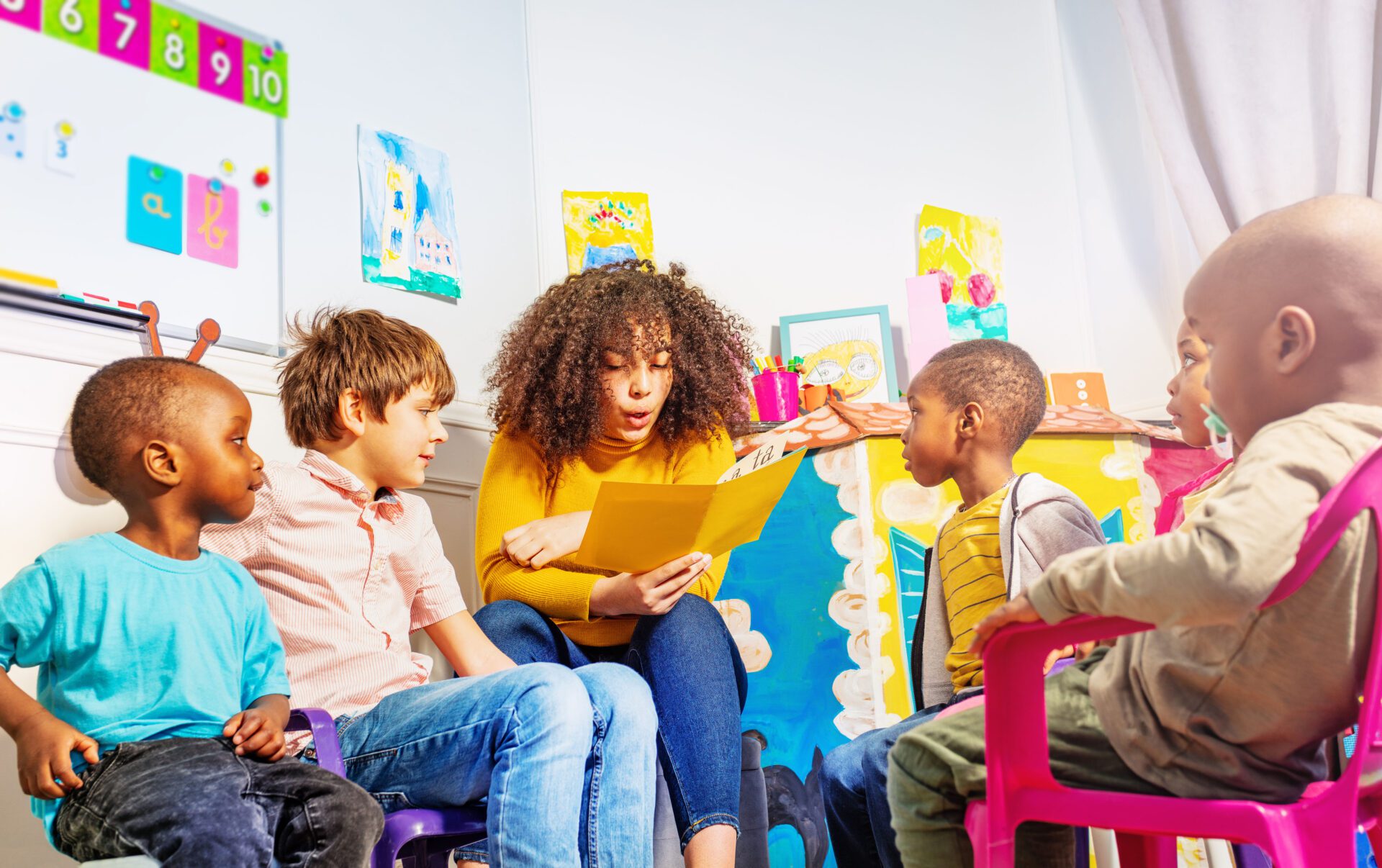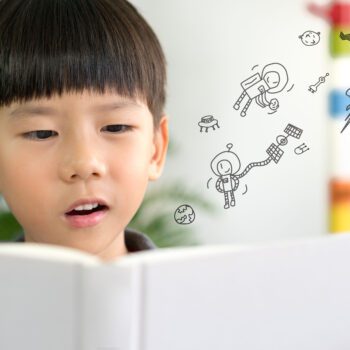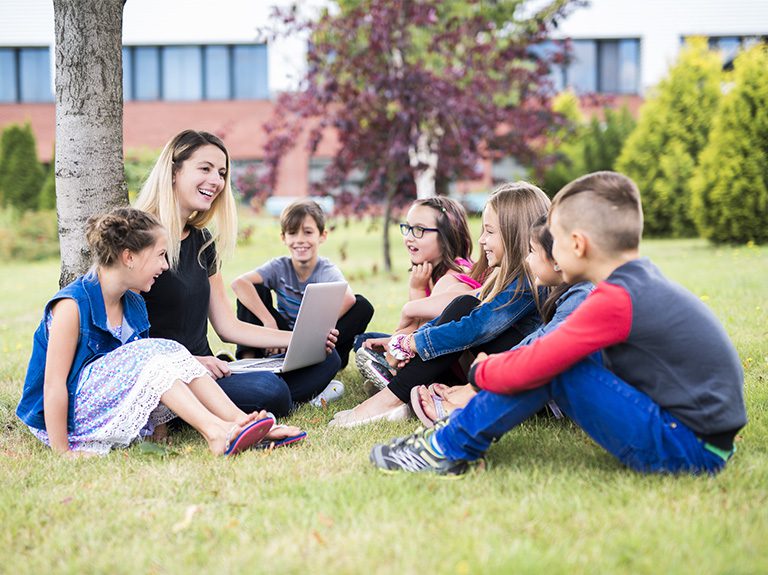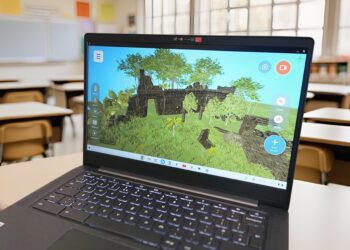Immersive moments have been happening in classrooms for many years. As new technology comes along, we can easily forget that immersion can be achieved with something as simple as a good story. Let’s consider the profound impact that traditional storytelling can have on students.
Storytelling has been used for millennia to ensure that knowledge and wisdom are passed between people and last eternally. As a teaching method, storytelling captures the imagination, fosters deep understanding, and creates memorable connections to what is being taught. It provides prompts, grounded in context, and an inviting space for students to act on their natural curiosity. This, along with some of the benefits we’ll see below, is what makes storytelling such an important tool for classroom instruction.

Educational theories highlight the significant benefits of using narratives in teaching.

Constructivist Learning Theory
This theory claims that learners construct knowledge through experiences and reflections. Stories provide experiences that students feel like they have had and provide a framework for students to make connections and reflect on new information.

Cognitive Load Theory
This theory suggests that storytelling can help manage cognitive load by organizing information into a coherent structure, making it easier for students to process and remember.

Social Learning Theory
According to Social Learning Theory, students learn by observing and emulating others’ behaviors and decisions. Narratives in stories often include social contexts and interactions that students can observe and analyze.

Emotional Engagement
Emotions play a critical role in memory retention and learning motivation. When students are emotionally engaged, they are more likely to invest effort and curiosity in the subject matter. Stories, as we all know, have the power to evoke powerful emotions and leave lasting impressions on us all.
Benefits of Storytelling in the Classroom

Contextual Learning: Stories provide a context that makes abstract concepts more tangible and understandable. They help students see the relevance of what they are learning in the real world, further fueling their curiosity about how things work.
Enhanced Memory: The structure and emotional engagement of stories make information easier to remember. Students are more likely to recall facts and concepts presented within a narrative.
Active Listening: Storytelling promotes active listening, a crucial skill for academic success and interpersonal communication.
Critical Thinking: Analyzing stories helps develop critical thinking skills as students consider characters’ motivations, plot developments, and underlying themes.
Cultural Awareness: Stories from many different cultures broaden students’ perspectives and spark their curiosity.
Here are five ways that you could introduce storytelling moments in the classroom:
1. Use Stories to Introduce New Concepts
Start a lesson with a story that introduces the key concepts in a relatable and memorable way. For example, if you’re teaching about ecosystems, begin with a story about a specific animal and its habitat. This can provide a concrete example that students can refer back to as they learn more abstract concepts. Include a visual if you can, for example an image of the animal.
Tip: It doesn’t have to be a long story! If you’re a user of ChatGPT or other generative AI, you could ask e.g. ‘Write a simple story under 300 words, appropriate for middle school, including the following points’ and paste in some of your lesson objectives. Always make sure you review the content before sharing it with students.
2. Create Thematic Units Around a Story

Select a story or premise that ties into your curriculum and build a unit around it. For instance, a story involving time travel can bring history lessons to life, providing a human perspective on historical events.
Have you discovered TimePod Adventures? Take students to the depths of the prehistoric ocean, the surface of Mars and more in the TimePod, in a series of thrilling episodes with supporting lesson materials. Find out more here!
3. Appeal to the Senses
By engaging multiple senses simultaneously, we activate different areas of the brain – and the more senses that are telling the brain the same story, the more likely the student is to suspend disbelief and allow themselves to be absorbed. Use props, sound effects, and visual aids to make the story more vivid and engaging. Find out more about creating immersion using the five senses.
4. Use Tech, Including Game-Based Learning Experiences
With game-based learning such as HOME (a free-to-play narrative experience giving students a view of Earth from the perspective of space), students are learning to problem-solve, make decisions and think critically at the same time as absorbing the topical content. While the focus is on non-tech methods, technology can still play a supportive role. Use audio recordings, digital storyboards, or interactive e-books to complement traditional storytelling. Find out more about game-based learning experiences.
5. Make Use of Local Stories and Oral Histories

Tap into local culture and history by incorporating stories from the community. Invite guest speakers, such as local historians or elders, to share their stories with the class.
Tip: Assign students to interview family members or community figures and present their stories to the class, to nurture research skills and community connection.
So, whether it’s a short tale to cover in a single session, or a premise to base your entire unit of study on, I encourage you to find a narrative linked to your learning material. Don’t get hung up on how perfectly the story covers your objectives – just find something that will open students’ hearts and minds to the world inside the narrative. You’ll be amazed at the connections they’ll make between the story and the rest of your lessons. Embrace the power of narrative and watch your students' curiosity and understanding flourish
A Word of Caution
By its nature, immersion can elicit emotional responses from students. Always be aware of the potential triggering effect of any of the above on specific students in your setting, and exercise due care and attention.






